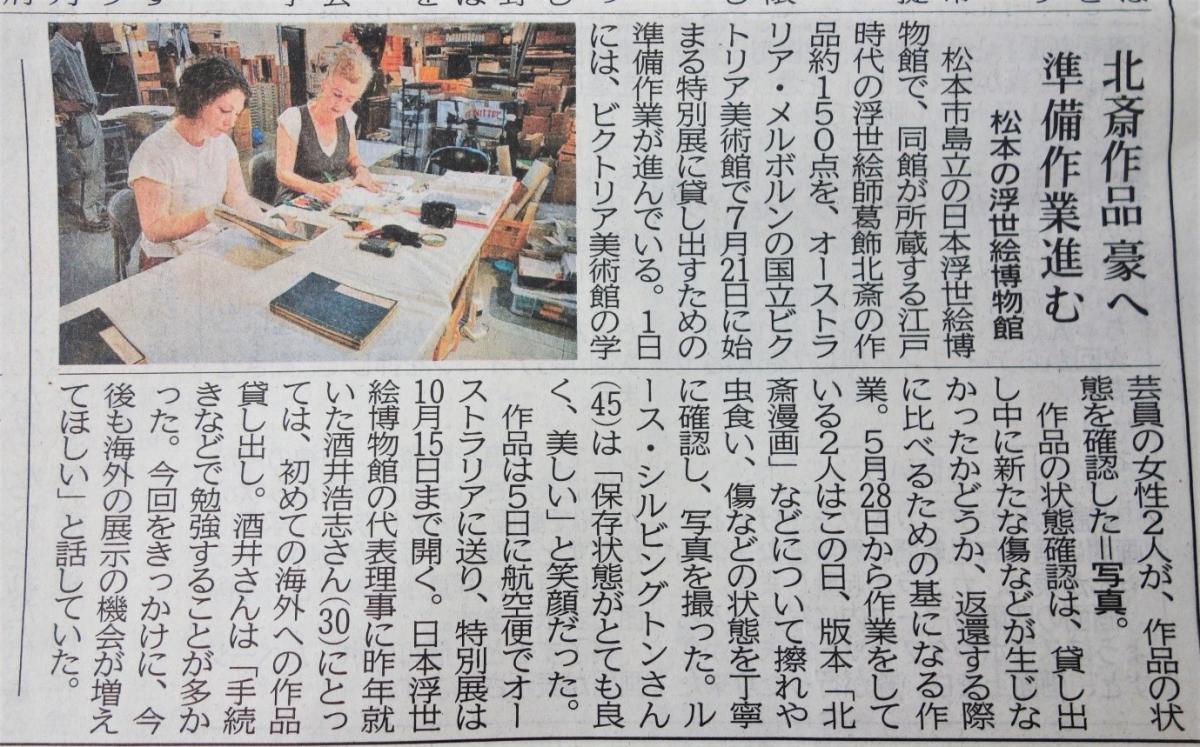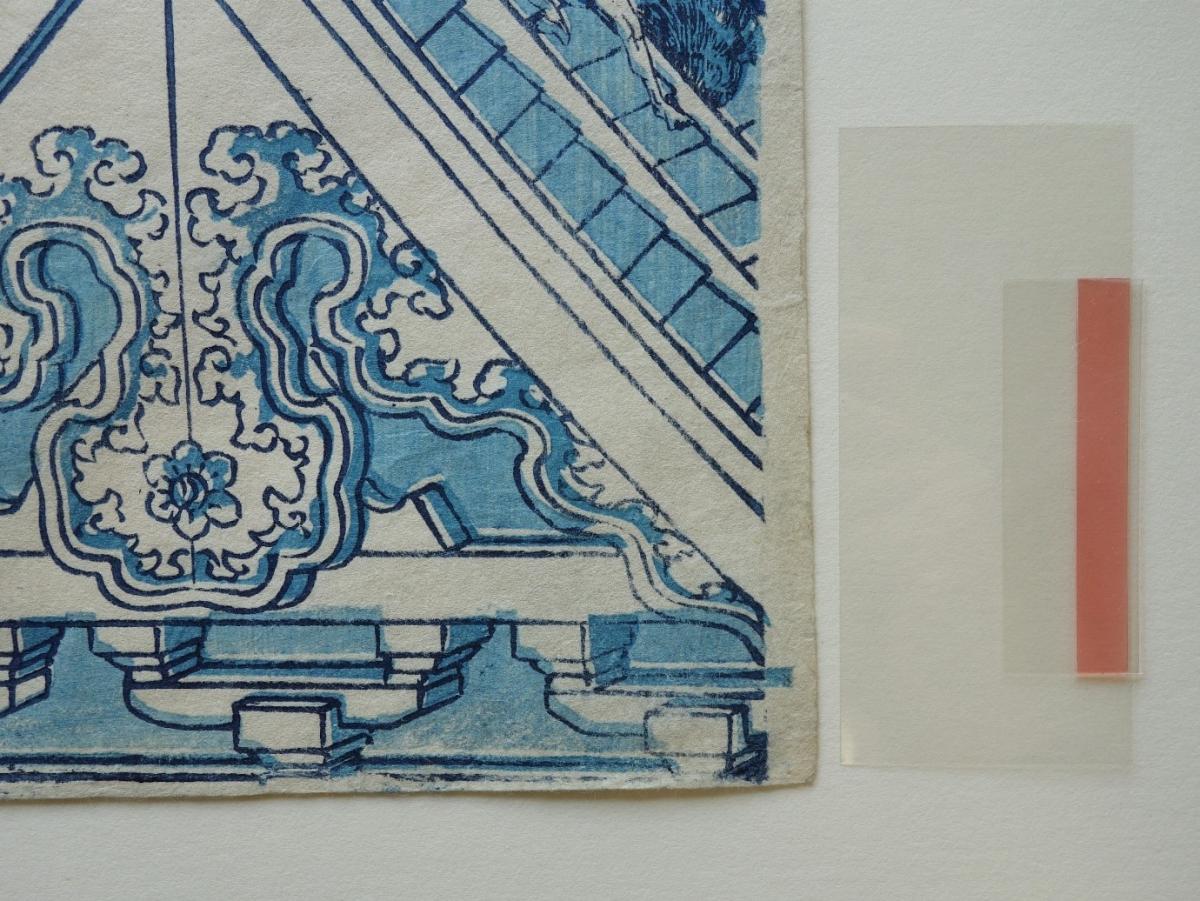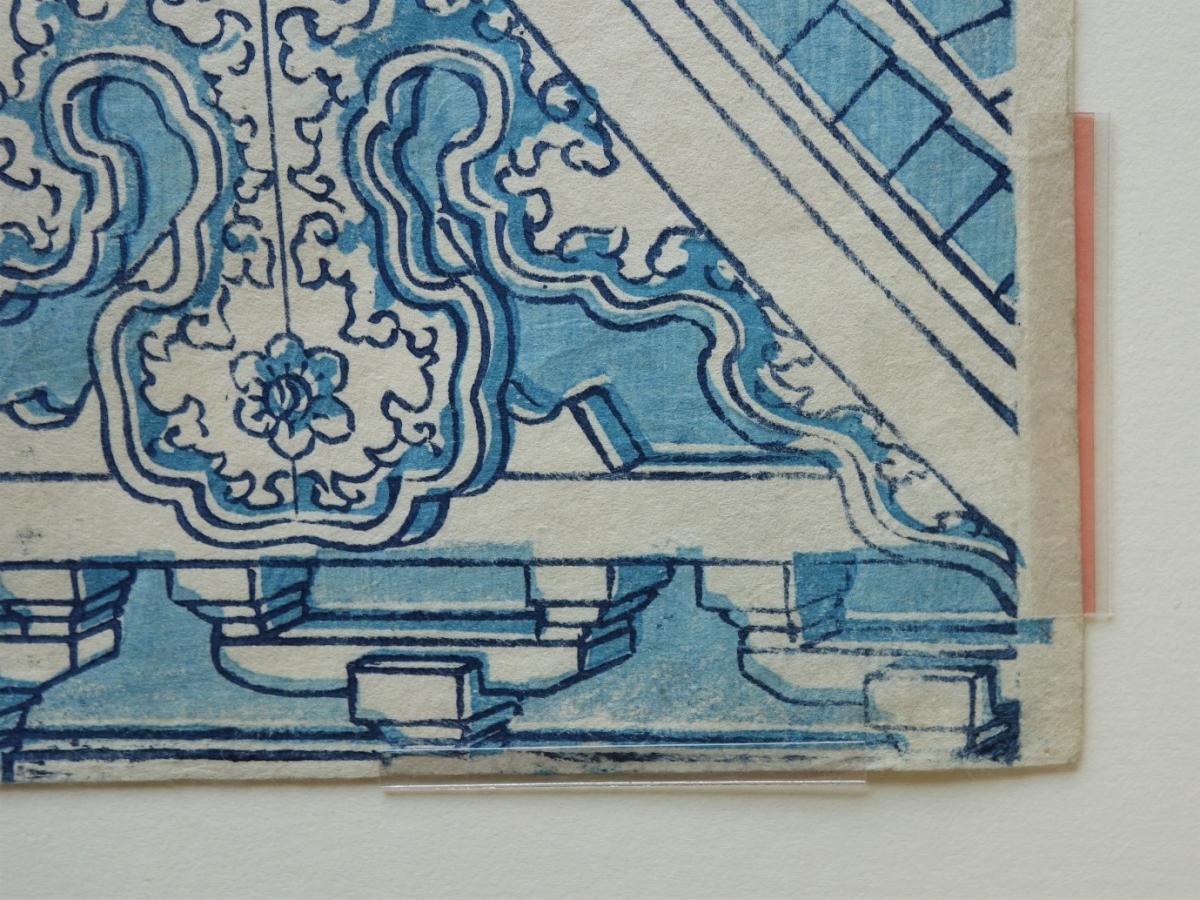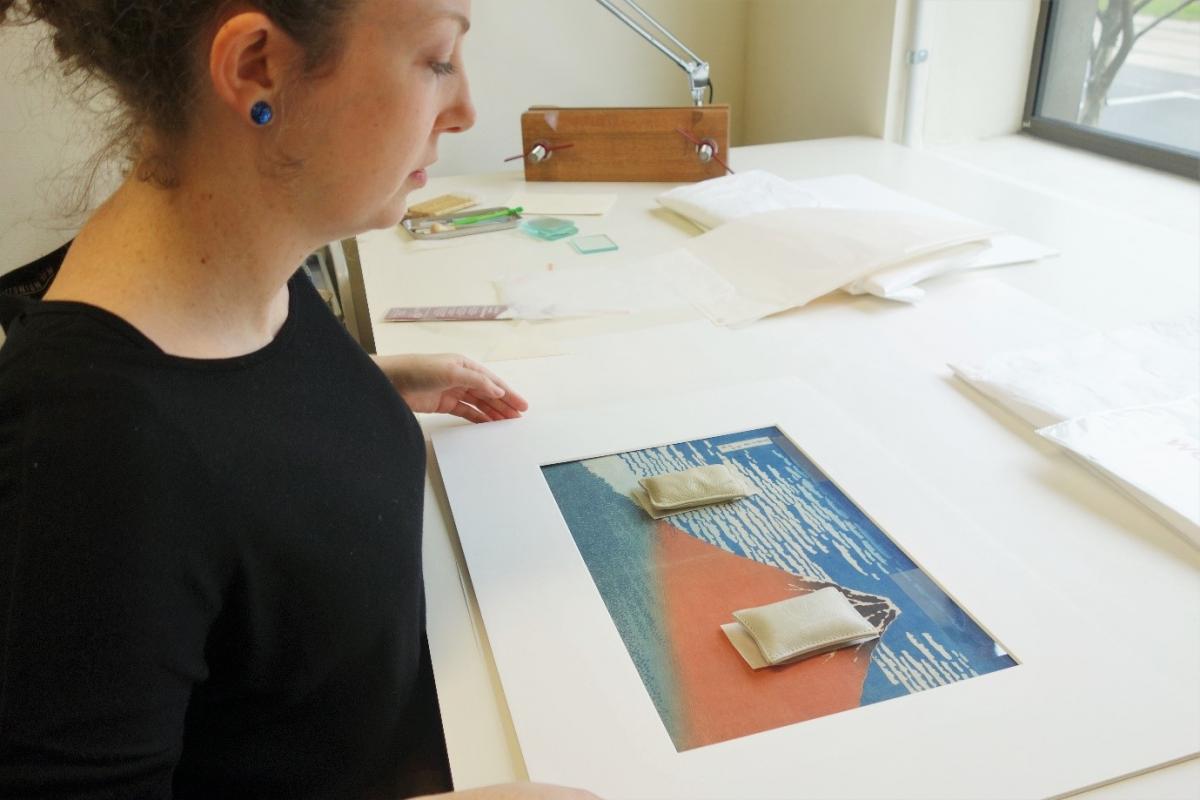Collaboration with JUM
The exhibition Hokusai currently on display at the National Gallery of Victoria (NGVI) until 15th October is a result of a close collaboration between the Japan Ukiyo-e Museum (JUM) in Matsumoto, Japan and the NGV. The exhibition comprises of over 170 works by Katsushika Hokusai, ‘the old man mad about drawing’[i], made at varying stages throughout his life in a variety of mediums. The exhibition showcases complete series of Japanese wood-block prints such as; Thirty-six Views of Mt Fuji, 1830 – 34, A Tour to the Waterfalls in Various Provinces, c. 1832, Remarkable Views of Bridges in Various Provinces, c. 1834, Eight Views of the Ryukyu Islands, c.1832, and One Hundred Ghost Stories, c. 1831, all works created toward the end of Hokusai’s life at age 70. The majority of the works have come to the NGV on loan from JUM, who holds ‘one of the best Hokusai archives in the world’[ii].
The JUM collection
The JUM collection began with Yoshitaka Sakai, who in 1790 was the second richest man in Matsumoto, an art patron and collector of Ukiyo-e art. It is believed that Yoshitaka was well aquatinted with established Japanese artists of the time and would have received personal visits to his home by Hokusai himself. The collection of Ukiyo-e art has since been passed down the Sakai family line over five generations and in 1982 JUM became the official establishment it is today. The collection has grown over the years, buying back Ukiyo-e works from the West and currently comprises of approximately 100,000 objects. This makes the JUM collection of Ukiyo-e works one of the largest in the world and the quality and quantity is held in high esteem in Japan. As well as housing this large collection, the JUM building offers a rotating exhibition space open to the public year round. [iii]

Visiting JUM to condition check and collect Hokusai works
At the end of May, I had the opportunity as the Ian Potter Paper Conservation Fellow to travel with Senior Conservator of Paper, Ruth Shervington, to Matsumoto where we undertook the condition reporting of Hokusai works prior to their shipment to Melbourne. Matsumoto is located approximately 220km North-West of Tokyo, surrounded by the snowy topped Alps of the Nagano prefecture. The town is based around Matsumoto Castle, also referred to as the ‘Crow Castle’ because of its black exterior, and is Japan’s oldest castle that was built at the beginning of the Eisho era 400 years ago. Close by the Castle is a mixture of neatly kept traditional buildings, houses and shrines with restaurants serving local soba noodles, wasabi and a Matsumoto delicacy; ‘basashi’ (raw horse meat). Although the town comprises of many traditional establishments it also has a modern and busy city centre accommodating its rapidly growing population of close to 250,000.
The JUM is nestled approximately 4km West from the city centre, alongside Matsumoto’s Japanese Court and Open-air Architectural Museum with scattered rice fields strewn between. The condition checking at JUM involved the viewing and assessment of approximately 150 Japanese wood block prints, seven books and four scrolls over an intense five-day period. The prints all appear to be in very good condition and many have very vibrant colours suggesting the works have had minimal display in their lifetime. The books are also in remarkable condition with strong bindings that again suggest minimal use over the years. The four scrolls all have new contemporary mounts, while the ‘honshi’ (main painting) are in very good condition. Due to importation restrictions set by the Convention on International Trade in Endangered Species of Wild Fauna and Flora (CITES), the ivory ‘jiku’ (bottom rod end knobs) on two scrolls were removed and replaced with acrylic for the duration of the Australian loan. After each work was individually inspected, condition aspects were noted by hand on a printed report template and image overlay. Each report was then assessed by JUM curator, Azusa Gomi and counter signed. For transport the works were interleaved and flat-packed into custom-made folders and boxes, then packed over five custom made crates for travel. Ruth couriered the shipment of JUM Hokusai works from Matsumoto to Tokyo by truck and then from Tokyo to Melbourne by aeroplane.


Developing a mounting system
In anticipation of over 150 Hokusai artworks arriving at the NGV from JUM, with as little as six weeks’ preparation time between arrival and exhibition, a mounting system for the prints was developed in advance and approved by JUM.
Both the limited time frame and adapting a non-interventive method were the two main factors to be considered in developing a mounting system. As the prints are borrowed artworks, they could not be altered in any wayand must return in the exact state in which they arrived. Therefore, a standard mounting method such attaching Japanese paper hinges adhered to the verso of prints with wheat starch paste was not applicable.
After referring to some literature and discussing a variety of options, it was decided to test the method of attaching V-channel hinges/supports. Due to a large volume of prints requiring mounting, ready-made hinges were sourced – Secol™ V Mount System polyester strips.[v]. The V-strips consist of a clear polyester channel with acrylic adhesive attached to one side. They are 20cm in length with one edge welded closed, the other is open with one narrower lip at the front (0.8cm wide) and the pressure sensitive adhesive (with carrier) is attached to the wider lip at the back. The V-strips were tested on a variety of sizes and weights of Japanese sheets, folded through the centre to imitate the fold-line Japanese prints of the Ukiyo-e period often have. Placement of the V-strips on the sheet was also tested, for example, right up to the welded edge, at a distance to the welded edge and trimmed front lips etc. This was undertaken to assess how much of the front lip of the V-strip was required to cover the edge of the paper for it to be safely displayed while maintaining minimal image cropping. Many Hokusai prints are of a small standard size, however a few larger early works are also included in the exhibition, thus larger Japanese sheets were also tested.
The framing method was trialled to assess slumping or movement of the sheet while on display. It was discovered that if the mounts were placed facedown at any time during frame installation that billowing and movement occurred at the centre of the sheet, especially when framing larger sheets. Installing the mounted sheet into a frame while upright on an easel seemed to solve this problem. These ‘test mounts’ were then stored in their frames in vertical tills over a few weeks to assess the occurrence of movement, which did not appear to happen over this period of time. Examples of the test mounts, a sample of the Secol™ V Mount System polyester strips and images of frame installation were taken to the JUM for approval of the overall mounting system.
Preparing Hokusai works for display
During the condition checking process, NGV Conservation Mount-Cutters measured each print for window mounts. The window mounts were cut so that they cropped the image minimally while allowing enough room to cover the print so that the V-strip would be hidden.
The prints were placed inside the mount, aligned in accordance with the window then secured in place with leather weights. The V-strips were cut approximately to 5cm in length and depending on the size and fragility of each print, approximately 10 short strips were used to mount each print.
To guide the V-strip onto the print safely, a piece of Mylar™ (cut larger than the strip) was first inserted into the V and kept on top of the print during placement. Using the piece of Mylar™ allowed the V-strip to be placed on the print more easily and safely, avoiding catching on any tears, creases or fragile print edges. The V-strips were first placed on the edge of the work (without being adhered) and then manoeuvred so they did not protrude past the window when closed. V-strips attached to the lower edge of each print were trimmed across the front lip so that the inside of the welded edge could be butted up neatly to the edge of the print. This ensured that there was no room for the print to slip downwards in its mount and also offered strong support to the lower edge, which holds the bulk of the sheets weight. V-strips placed at all other print edges were not trimmed, but rather pulled back slightly so that they cannot be seen beyond the window mount. This also allows enough room for the print to be easily removed at the duration of the exhibition. After the prints were mounted they were placed horizontally onto a backing support, then UV filtering glazing was placed horizontally on top of the work and as a three-part package, this was installed vertically into a frame supported by an easel.



Hokusai books from JUM were assessed and measured for display stands after condition checking. The JUM books were all the same dimension and all required high angled stands to support the spine. Therefore, a standard sized acrylic support was made for each and the books were strapped with polyethylene tape where necessary.
The four scrolls were hung onto scroll hooks (sourced from Masumi Corporation, Tokyo, Japan) and the lower rod end knobs were secured in place to the wall using polyethylene tape that was wrapped around the end knobs and then pinned to the wall.
Conclusion
This project has been an exciting event for the Paper and Photographs Conservation team having the opportunity to work with an incredible collection of Hokusai artwork. Comparing two early impressions of The great wave of Kanagawa, c. 1830, in the studio side by side has been a particular highlight of the exhibition preparation. Developing a mounting system, assessing the collection first in Matsumoto and again in Melbourne, then mounting and framing approximately 150 prints has been a large team effort by both the Paper and Photographs Conservators and NGV Conservation Mount-cutters. Having the chance to be involved with so many aspects of this exhibition has been a significant professional opportunity for me as part of my Fellowship.
The Hokusai exhibition will be on display until mid-October and after this time the works will be removed from their frames and released from their mounts. The Paper and Photographs conservation team will condition check the works before packing them back into their crates and NGV staff will courier the works back to Japan. Once arriving at the JUM in Matsumoto the works will be unpacked and condition checked for a final time.

[i] ‘The old man mad about drawing’ translation of the name Gakyōrōkujin, a name Hokusai used to sign his work in later life. Crothers, Wayne ‘Hokusai: The old man mad about drawing’, Hokusai, National Gallery of Victoria, July 2017. p.11 .
[ii] Quote from Wayne Crothers, Curator of Asian Art at the NGV
[iii] Sakai, Nobu. ‘The Japan Ukiyo-e Museum’, Hokusai: The loan exhibition from the Japan Ukiyo-e Museum from December 29 1993 to April 51994, JUM, December 1993, p. 256. Website: https://www.jnto.go.jp/eng/spot/museum/japanukiyoeart.html
[iv] Koji Sakai, Director of JUM.
[v] Secol™ V Mount System polyester strips were ordered through Conservation by Design.